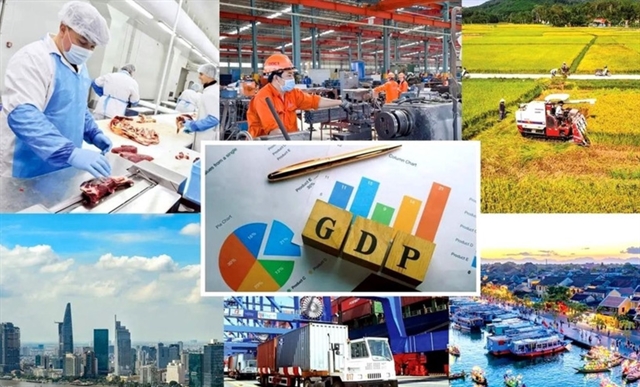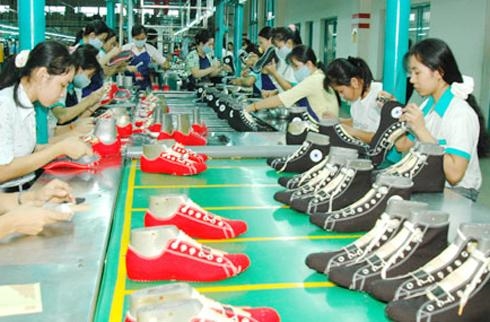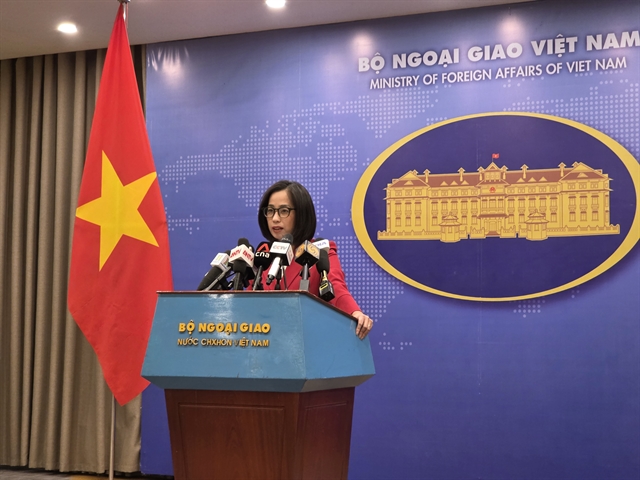 Economy
Economy

Việt Nam’s (B1 stable) credit profile is supported by its robust economic growth and diversified economy, Moody’s Investors Service said on Wednesday.
 |
| Moody’s forecasts Việt Nam’s real GDP growth to remain around 6.0 per cent in the next two years. - Photo tinnhanhchungkhoan.vn |
HÀ NỘI – Việt Nam’s (B1 stable) credit profile is supported by its robust economic growth and diversified economy, Moody’s Investors Service said on Wednesday.
These credit strengths are balanced against accelerating credit growth, wide fiscal deficits and an increasing government debt burden. At the same time, while the operating environment for the banking sector has stabilised, capital levels remain inadequate and asset quality is still weak.
Moody’s conclusions were mentioned in its just-released annual credit analysis of Government of Việt Nam -- B1 Stable. The report elaborates on Việt Nam’s credit profile in terms of Economic Strength: High (-); Institutional Strength: Low; Fiscal Strength: Low (+); and Susceptibility to Event Risk: High, which are the four main analytic factors under Moody’s Sovereign Bond Rating Methodology.
Over the last two years, GDP growth in Việt Nam has picked up to above 6.0 per cent, which stands in contrast to slower growth across much of the region as well as among rating peers. Moody’s forecasts real GDP growth to remain around 6.0 per cent in the next two years.
According to Moody’s, stronger domestic demand has prompted healthier demand for imports. As a result, the current account surplus has declined and Moody’s forecasts a small surplus of 0.6 per cent in 2016. Nevertheless, with the central bank’s new exchange rate mechanism, Moody’s still expects the balance of payments to be in a healthy surplus with a net accretion of foreign exchange reserves.
Fitch: Growth attracts foreign capital for VN banks
On the same day, Fitch Ratings also released a report on Việt Nam’s banking sector, saying that Việt Nam’s strong economic performance is helping the country attract much-needed foreign capital into its banking system.
According to Fitch, banks are likely to need additional capital as they respond to the phasing-in of Basel II capital adequacy standards by end-2018, while trying to meet demand for rapid credit growth.
GIC, a Singapore sovereign wealth fund, signed a memorandum of understanding on Monday to buy a 7.7 per cent stake in Vietcombank, Việt Nam’s largest bank by market capitalisation.
The deal follows the recent purchase of a 5 per cent stake in a much smaller bank, TienPhong Bank, by the International Finance Corporation.
This injection of foreign capital is a positive trend and comes at a time of strong economic growth, which has helped to stabilise asset quality.
“We forecast real GDP growth of 6.2 per cent in both 2016 and 2017. Healthy economic growth plus a recovery in the real estate market are likely to lead to a slower NPL formation, at least in the short term,” Fitch said, adding that liquidity and funding conditions should continue to be supported by local-currency stability and benign inflation.
Fitch’s outlook for the banking sector was revised to stable from negative in December 2015 to reflect these conditions.
Nevertheless, Việt Nam’s banks are still facing a range of structural problems, not least of which is weak capitalisation. Published capital-adequacy ratios (CAR) are low and under-reporting of NPLs suggests that true capitalisation is even weaker. Capital buffers are likely to come under pressure over the next couple of years.
Ten banks have been designated by the central bank to move to Basel II, with full adoption expected by end-2018, and Fitch believes that the banks’ CARs would be pushed lower by the shift to a more conservative regime.
Those banks with CARs close to the 9 per cent regulatory minimum will need more capital. Vietcombank, for example, had a CAR of just 9.7 per cent under the Basel I regime at end-June 2016 and Basel II is likely to have been one of the key motivations for its deal with GIC.
Rapid credit growth is also creating a need for more capital. Private-sector credit grew by an average of 16.4 per cent per year during 2010-14 and rose by 17.3 per cent in 2015. Another pick-up is likely in 2016, with the official target for the year set at 18-20 per cent.
Fitch warned that rapid credit growth poses a risk to Viet Nam’s medium-term financial stability, particularly since the credit/GDP ratio -- at 110.5 per cent in 2015.
A sustained rise in foreign appetite for Việt Nam’s bank equity would be a positive development because the banking sector has significant recapitalisation needs, Fitch said. - VNS




